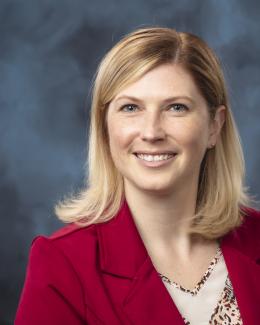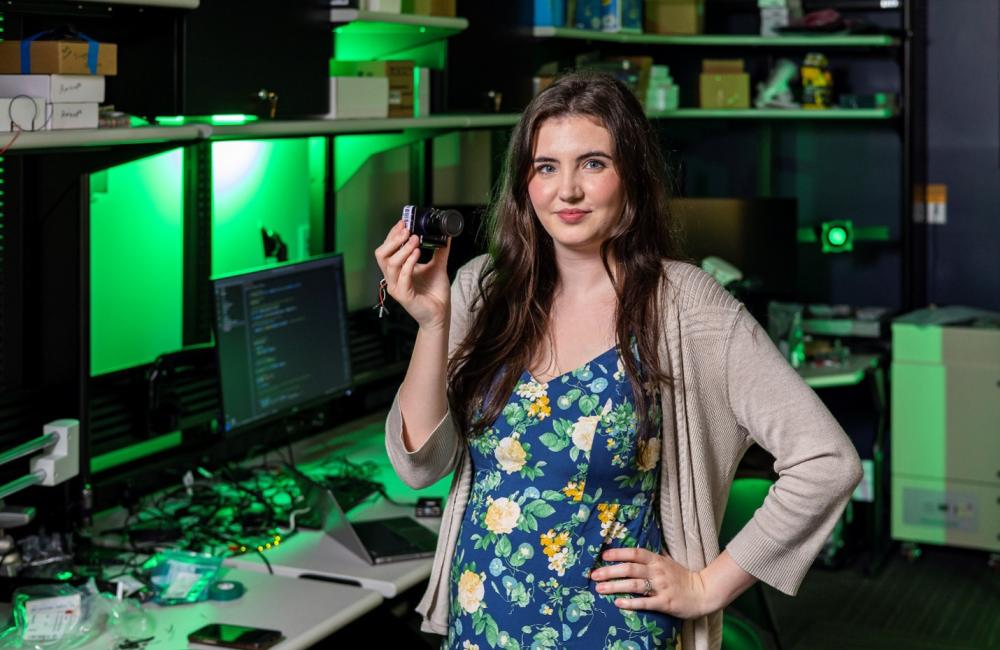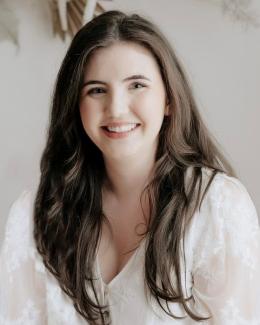Tristen Mullins. Credit: Carlos Jones/ORNL, U.S. Dept. of Energy
Tristen Mullins enjoys the hidden side of computers. As a signals processing engineer for the Department of Energy’s Oak Ridge National Laboratory, she tries to uncover information hidden in components used on the nation’s power grid — information that may be susceptible to cyberattacks.
“I derive hidden information about a device by looking at what’s happening outside of the main process,” Mullins said. She looks for a variety of clues, such as how long it takes for a piece of hardware to fully turn on, how long it takes for a program to execute or the device’s power consumption behavior.
Mullins came to ORNL in 2022 after finishing her doctoral degree. For her dissertation, she looked at ways to protect an electronic system from inadvertently giving away information in a cyber analysis technique called side-channel analysis. She recently received an award from her alma mater, the University of South Alabama, for the Dissertation of the Year in Mathematics, Physical Sciences, and Engineering.
Side-channels are unintended information leaks in electronics. When a device is in operation, there are unavoidable physical characteristics that may be observed. For example, microprocessors consume time and power and emit electromagnetic radiation when completing tasks. The behavior of these phenomena may be analyzed to reveal sensitive details about their corresponding processes. This information could be used to derive critical information about the system, which may allow an attacker to compromise the device. For electronics used to keep power running to hospitals, businesses and homes, one vulnerability could bring down the whole system.
Mullins likens this process to a kid trying to avoid being caught staying up past bedtime. Instead of waiting for a parent to come into the room, the kid may listen for footsteps or creaks on the stairs or lights turning on under the door. Mullins observes what is going on outside of the main process to see if a system is behaving as it is supposed to or if it has been compromised. “You're piecing together all the information to get a big picture,” she said.
Side-channel research is something Mullins discovered while at college. She joined a student group called Day Zero where she learned about attacks to computer networks. The idea of figuring out how to gain access into a system intrigued her, as did the concept of finding solutions to preventing access. Knowing how to get into a system also meant she could design methods to protect others from finding a way in.
As a CyberCorps Scholarship for Service recipient, Mullins was required to find a job with a government entity. She chose ORNL to fulfill this requirement and now intends to make research her career. She enjoys the thrill of looking at a new piece of equipment to find its complexities and figure out a way to protect it. Iterating through ideas until she finds a solution brings her back to work each day.
She also appreciates the variety of people she works with and the types of equipment she encounters. Since the challenges vary with each new project, she and her colleagues find novel solutions based on whatever questions need to be answered.
Winning the best dissertation award surprised Mullins. She recognized the support she received from her dissertation advisor and classmates, especially since she was pregnant with her third child during the grueling months of completing her dissertation. “It definitely made staying up until 2 a.m. worth the effort,” she said.
UT-Battelle manages ORNL for the Department of Energy’s Office of Science, the single largest supporter of basic research in the physical sciences in the United States. The Office of Science is working to address some of the most pressing challenges of our time. For more information, please visit energy.gov/science. — Liz Neunsinger




